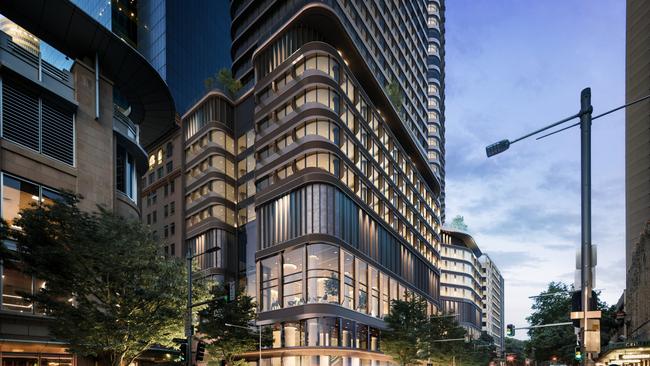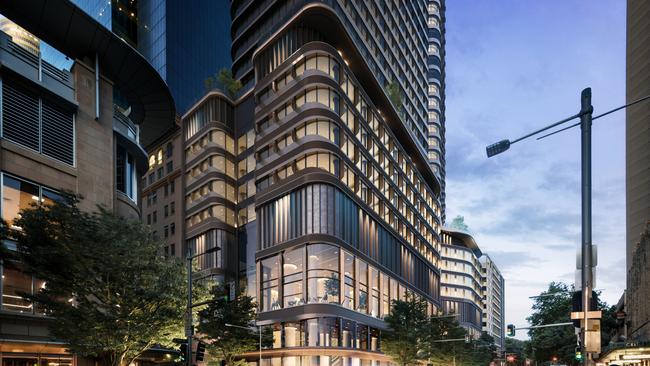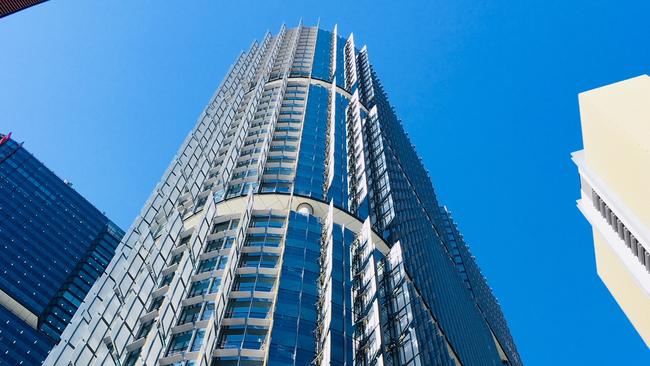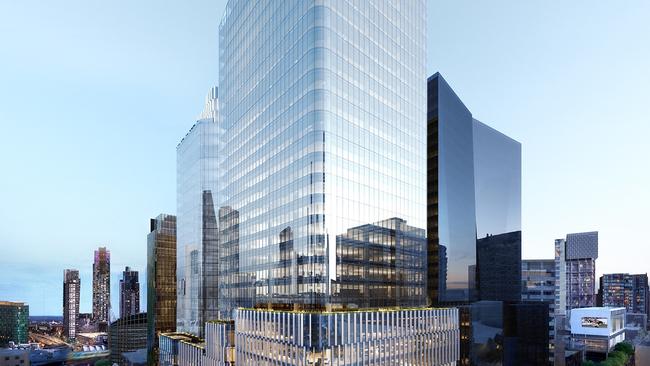Office crunch: vacancy stalks suburban markets as cities stabilise with flash new offerings
Australian office vacancy increased to 14.1 per cent over the six months to July, putting more towers under pressure.

Vacancy rates in Australia’s office markets have hit their highest levels since the mid-1990s, bumping up over the past six months, driven by an uptick in the supply of new buildings and ailing suburban markets.
While there are few winners amid the tough conditions for landlords as the balance shifts in favour of tenants, corporate Australia is now turning to a wave of next generation towers and revamped assets to draw staff back to their desks.
But office towers further down the scale face the prospect of increasing pain as demand shifts away from lower-grade stock, which could support calls to convert some sites into residential uses.
Australian office vacancy increased from 13.4 per cent to 14.1 per cent over the six months to July, according to the Property Council of Australia’s office market report.
It revealed the growing split between the stabilisation in central business districts and the nation’s still sluggish suburban and metropolitan markets.
But declining demand for space in the two largest markets – the gateway city of Sydney and lagging Melbourne – underscored the need for government leadership, the council said.
The survey found strong demand for office space in Brisbane, Perth, Canberra and Adelaide which were not as affected by the pandemic and where the return to work has been faster.

The overall CBD vacancy increased from 12.6 to 12.8 per cent nationally, while non-CBD areas soared from 15.2 to 17.3 per cent.
While the Australia-wide vacancy rate increased, this was partly driven by the boom years of office construction, as the supply of office space in CBDs in five out of the council’s past seven half-yearly reports exceeded the historical average.
This has been pronounced in Sydney and Melbourne, where new towers are being hailed as a way of getting staff back to work but have also lifted supply, putting the pressure on the overall market to absorb new supply.
Charter Hall last week won a major 10-year precommitment lease with technology firm, Ericsson to move to its $1.5bn office precinct at 555 Collins St in Melbourne, where it will join the likes of Amazon.
And in Sydney, communications company WPP has undertaken a major consolidation that will land it at Charter Hall’s 1 Shelley St in 2024 as Macquarie Group moves to its new Martin Place tower.
Other landlords are also active, with the NSW Office of the Director of Public Prosecutions to move to Investa’s under-construction Parkline Place tower in Sydney, and listed telco TPG Telecom shifting to Sydney’s Barangaroo harbourside precinct, taking up space from Westpac at Tower Two.
Positive demand for office space was recorded in Brisbane, Perth, Adelaide and Canberra, boosting these cities. In Brisbane, the vacancy rate declined from 12.9 to 11.6 per cent, while Canberra saw a decrease in vacancy from 8.9 to 8.2 per cent.

Sydney’s vacancy rate bumped up from 11.3 to 11.5 per cent, and Perth’s edged up from 15.7 to 15.9 per cent. Adelaide had a rise from 16.1 to 17 per cent, and Melbourne’s vacancy rate increased from 14.1 to 15 per cent.
Property Council chief executive Mike Zorbas said Melbourne and Sydney were facing some challenges that require attention.
“Demand remains strong in four of the six capital cities captured in our detailed survey, but it has subsided across the big two, Sydney and Melbourne,” he said.
“Overall, demand for CBD office space nationally is fairly stable, slightly dropping to negative territory after a year and a half of positive demand.”
Premium and A-grade offices are in high demand, backing corporate Australia’s desire to provide attractive workplaces.
“These organisations recognise that maintaining a physical office presence in our cities is vital for conducting business effectively,” Mr Zorbas said.
“There have been big advances in the inclusiveness of our workplaces through flexibility in ways of working over the past decade, but we also need the balance of governments leaning in and supporting the vibrancy of our CBDs.”

The supply of office space in CBD markets is expected to remain close to the historical average across 2023, with an expected increase above the average in the second half of 2024. Non-CBD markets are predicted to experience a higher-than-average supply in the first half of the next year before this trails off.
Sublease vacancy increased in the non-CBD markets but was steady in CBDs with the two largest cities above the historical average, but supply could be an issue. Sydney and Melbourne have over 200,000sqm of new office space planned in the next three years.
“However, precommitment rates are lower than Brisbane, with only 42 per cent in Sydney and 17.4 per cent in Melbourne already secured by tenants,” Mr Zorbas said.
CBRE Advisory & Transaction Services senior managing director, Pacific, Mark Curtain, said corporate occupiers were seeking to reinvent their workplaces and encourage employees to return to the office.
“While the current market circumstances are weighing on the sector in the short term, it will lead to supply constraints that will enable the markets to recover and absorb the oversupply that resulted from Covid-19,” he said.
Colliers managing director, office leasing Australia, Cameron Williams, noted the flight to quality.
“Despite the overall national vacancy rate increasing, the results remain divergent by market and grade and there is still a strong pull to quality and a pull to precincts underpinning strong levels of leasing activity,” he said.
Mr Williams identified the northeastern part of Sydney CBD, the “Paris end” of Collins St in Melbourne and the River precinct in Brisbane as favoured by tenants.
“We are seeing strong indicators of demand, which bode well for the second half of 2023, including an increase in the number of inquiries and healthy levels of leasing activity,” he said.
JLL head of office leasing Australia, Tim O’Connor, said the labour market had proven to be resilient, with the tech crunch being offset by growth from professional and financial services firms. He is also backing top buildings as the best performers.
“We are seeing organisations upgrade their real estate requirements to create an environment that supports connectivity, collaboration and socialisation,” he said.
Knight Frank national head of leasing Andrea Roberts is also backing the flight to amenity as driving the demand for workplaces in offices near transport, top restaurants and shopping.
Ms Roberts noted there was a split inside overall city markets.
“There is, however, a bit of a tale of division in vacancy and leasing performance within the cities, which we see for example in Sydney in the core versus western corridor, and in Melbourne it’s east versus west versus Docklands,” she said.
“We see also a divergence between assets in markets increasing if owners haven’t invested in capital upgrades and refurbishments,” she said.
“Simply put, if an asset doesn’t tick all the items on an occupier’s amenity wish list, that asset will have the longest downtime and be the last to lease, with decisions not necessarily based on price,” Ms Roberts.
Cushman & Wakefield head of office leasing Australia and New Zealand, Tim Molchanoff, said landlords were looking at new ways of drawing tenants in the face of tough competition and high incentives.
There may not be an easy way out.
“With higher grade supply coming online in some markets, tenants now have more options as they seek to upgrade their office premises. While this is pushing up face rents, that growth is still being capped by higher incentives.”




To join the conversation, please log in. Don't have an account? Register
Join the conversation, you are commenting as Logout